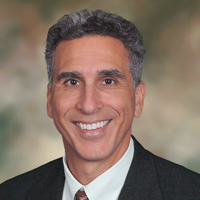Retirement Planning Is Cash Flow Planning
Cash flow planning may sound complicated, but what it boils down to is comparing your assets to your expenses over time and identifying periods when you may fall short and when you may come out ahead.


Years ago I saw a poster that said, “Happiness is a positive cash flow.” I believe that’s true, especially when it comes to your retirement. And I believe that one of the best ways to find that particular form of financial happiness is to use cash flow analysis in your retirement planning.
It’s a simple exercise. To begin with, gather information for all the sources of income you’ll have during retirement. Since this analysis will help you determine what you’ll need to earn from your liquid assets (stocks, bonds, 401(k)s, etc.) to meet your income needs, leave them out of the equation for now. Instead, list income from pensions, real estate, Social Security or part-time employment. Then figure out how the timing of each of those income sources will affect your finances year by year. In other words, when will you receive that money? For example, will you receive Social Security benefits at beginning at age 66, or do you plan to wait?
Carefully Consider Your Expenses
Next, add up your projected expenses year by year. The amount you use in your analysis needs to include everything. Many times clients say something like, "That’s easy. Our expenses are $3,000 a month." So I ask, “Do you play golf? Do you give money to your church? To your children or grandchildren?” Almost everyone I question has overlooked one or more expenses.

Sign up for Kiplinger’s Free E-Newsletters
Profit and prosper with the best of expert advice on investing, taxes, retirement, personal finance and more - straight to your e-mail.
Profit and prosper with the best of expert advice - straight to your e-mail.
Look at the timing of your expenses, i.e. when exactly will you spend that money? Have you planned a big vacation to Europe right after you retire? Add the cost of the trip to that year’s expenses. Will you need a new car? Figure out when you’ll make that purchase, and put the cost in the appropriate year’s expenses. Want to refurbish your house? Ditto. Many people want to do all the things they didn't have time to do when they were working, and many of those things cost money. Don’t forget those costs when it comes time to plan your cash flow analysis.
Do Your Best, But Be Ready for Updates
By this point in the process, you’ll realize that financial planning is an art, not a science. You can’t predict your exact income or expenses. You may not get that part-time job. You may incur unexpected medical expenses. You may receive an inheritance. Start with your best guess, with the idea that you will review your plan annually, if not two to three times a year.
Once you have your best guesstimates laid out year by year, you’ll probably find that your planned cash flow is not consistent. The money you’ll spend on that long-awaited European vacation the year you retire will take your cash flow down a notch, while the proceeds from the lake house you plan to sell when you’re 70 will bump up the flow.
As you can see, at its core, cash flow analysis is a simple exercise. It’s also an incredibly important one that helps you recognize your cash flow needs and their timing. Once you know what costs you’ll need to cover when, you can plan to set money aside or use money from your investments to carry you through any lean times.
Planning can help you achieve a positive cash flow, which can help you attain happiness in retirement.
Get Kiplinger Today newsletter — free
Profit and prosper with the best of Kiplinger's advice on investing, taxes, retirement, personal finance and much more. Delivered daily. Enter your email in the box and click Sign Me Up.

Ken Moraif is the CEO and founder of Retirement Planners of America (RPOA), a Dallas-based wealth management and investment firm with over $3.58 billion in assets under management and serving 6,635 households in 48 states (as of Dec. 31, 2023).
-
 Stock Market Today: Stocks Soar on China Trade Talk Hopes
Stock Market Today: Stocks Soar on China Trade Talk HopesTreasury Secretary Bessent said current U.S.-China trade relations are unsustainable and signaled hopes for negotiations.
By Karee Venema
-
 2026 Disney Dining Plan Returns: Free Dining for Kids & Resort Benefits
2026 Disney Dining Plan Returns: Free Dining for Kids & Resort BenefitsPlan your 2026 Walt Disney World vacation now. Learn about the returning Disney Dining Plan, how kids aged three to nine eat free, and the exclusive benefits of staying at a Disney Resort hotel.
By Carla Ayers
-
 SRI Redefined: Going Beyond Socially Responsible Investing
SRI Redefined: Going Beyond Socially Responsible InvestingNow that climate change has progressed to a changed climate, sustainable investing needs to evolve to address new demands of resilience and innovation.
By Peter Krull, CSRIC®
-
 Here's When a Lack of Credit Card Debt Can Cause You Problems
Here's When a Lack of Credit Card Debt Can Cause You ProblemsUsually, getting a new credit card can be difficult if you have too much card debt, but this bank customer ran into an issue because he had no debt at all.
By H. Dennis Beaver, Esq.
-
 Going to College? How to Navigate the Financial Planning
Going to College? How to Navigate the Financial PlanningCollege decisions this year seem even more complex than usual, including determining whether a school is a 'financial fit.' Here's how to find your way.
By Chris Ebeling
-
 Financial Steps After a Loved One's Alzheimer's Diagnosis
Financial Steps After a Loved One's Alzheimer's DiagnosisIt's important to move fast on legal safeguards, estate planning and more while your loved one still has the capacity to make decisions.
By Thomas C. West, CLU®, ChFC®, AIF®
-
 How Soon Can You Walk Away After Selling Your Business?
How Soon Can You Walk Away After Selling Your Business?You may earn more money from the sale of your business if you stay to help with the transition to new management. The question is, do you need to?
By Evan T. Beach, CFP®, AWMA®
-
 Two Don'ts and Four Dos During Trump's Trade War
Two Don'ts and Four Dos During Trump's Trade WarThe financial rules have changed now that tariffs have disrupted the markets and created economic uncertainty. What can you do? (And what shouldn't you do?)
By Maggie Kulyk, CRPC®, CSRIC™
-
 I'm Single, With No Kids: Why Do I Need an Estate Plan?
I'm Single, With No Kids: Why Do I Need an Estate Plan?Unless you have a plan in place, guess who might be making all the decisions about your prized possessions, or even your health care: a court.
By Cynthia Pruemm, Investment Adviser Representative
-
 Most Investors Aren't as Diversified as They Think: Are You?
Most Investors Aren't as Diversified as They Think: Are You?You could be facing a surprisingly dangerous amount of concentration risk without realizing it. Fixing that problem starts with knowing exactly what you own.
By Scott Noble, CPA/PFS